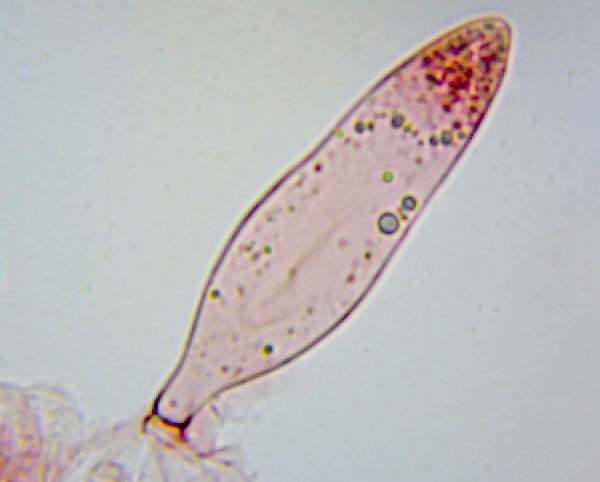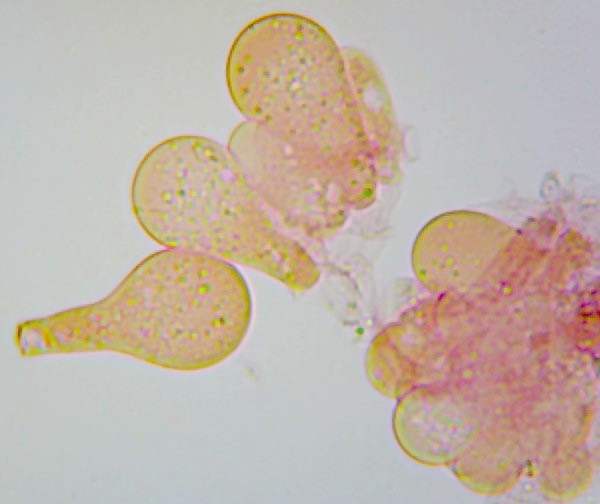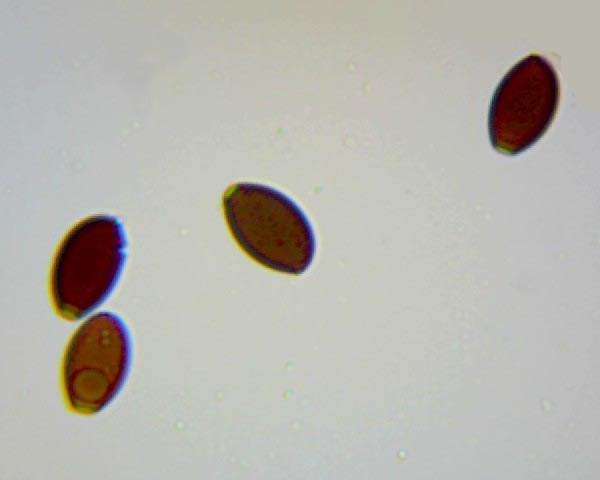Psathyrella bipellis (Quel.) A.H. Sm.
Phylum: Basidiomycota - Class: Agaricomycetes - Order: Agaricales - Family: Psathyrellaceae
Distribution - Taxonomic History - Etymology - Identification - Culinary Notes - Reference Sources
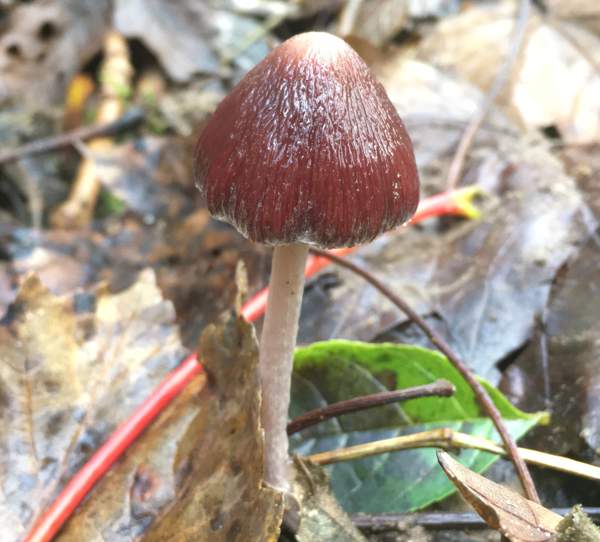
This beautiful little brittlestems mushroom is sadly an all to rare sight; it is saprotrophic on dead hardwood, often being connected to wood buried below the surface in grassy habitats.
Distribution
An uncommon to rare find in Britain and Ireland, Psathyrella bipellis occurs in many other parts of Europe including Norway, Germany, Italy, Spain and Portugal. This species is also widely reported from North America, where is occurs frequently in woodchip-mulched parks and gardens.
Taxonomic history
This brittlestem mushroom was originally described scientifically 1884 by French mycologist Lucien Quelet, who named it Psathyra bipellis. American mycologist Alexander H. Smith (1904 - 1986) transferred this species to the genus Psathyrella in 1946, thereby establishing its currently-accepted scientific name Psathyrella bipellis.
Synonyms of Psathyrella bipellis include Psathyra bipellis Quel., Drosophila bipellis (Quel.) Quel., Pilosace bipellis (Quel.) Kuntze, Psathyra barlae Bres., Pilosace barlae (Bres.) Kuntze, and Psathyrella barlae (Bres.) A.H. Sm.
Etymology
Psathyrella, the genus name, is the diminutive form of Psathyra, which comes from the Greek word psathuros meaning friable; it is a reference to the crumbly nature of the caps, gills and stems of mushrooms in this genus. The specific epithet bipellis comes from the prefix bi- meaning 'having two', and pellis, meaning skin - a reference to fact that a layer of veil fibres or flocci cover the pellicle of young fresh caps.
Identification guide
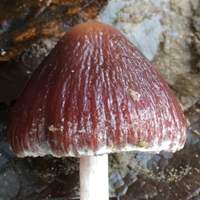 |
CapPurplish brown, to chestnut brown, occasionally yellowish brown; hygrophanous, drying ochre or beige; 1 to 6cm across; initially bell-shaped, flattening; margin striate; young caps bear radial white veil fibres or flocci, particularly dense at the margin. |
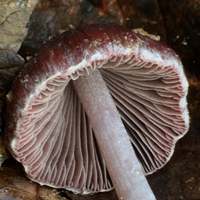 |
GillsAdnate, moderately crowded; dingy brown becoming chocolate brown; drying very dark brown, almost black. |
 |
StemWhitish, sometimes with a purple tinge, 4 to 8cm long and 2 to 5mm diameter; cylindrical, hollow, usually curved; as with other members of this genus there is no stem ring. |
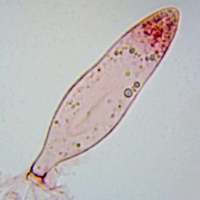 |
Cheilocystidia (1)Two types, the larger cheilocystidia (left) are very variable in shape but often utriform, langeniform or fusoid, 35 - 80 x 8 - 24µm.. |
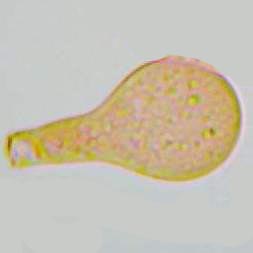 |
Cheilocystidia (2)The smaller cheilocystidia (left) are clavate. |
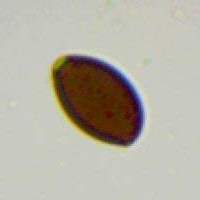 |
SporesVariable in shape but usually ellipsoidal to ovoid, smooth, 11-16.5 x 6.5-8.5µm with a large germ pore. Spore printReddish brown. |
Odour/taste |
Odour variable, sometimes fruity; taste not distinctive. |
Habitat & Ecological role |
Saprobic, on decaying wood or growing from buried hardwood twigs in open woodlands, parkland and grassy verges; often with beech (Fagus spp.). |
Season |
June to November in Britain and Ireland. |
Culinary Notes
This is uncommon to rare mushroom, of unknown edibility, is of no cullinary interest.
Reference Sources
Fascinated by Fungi, 2nd Edition, Pat O'Reilly 2016, reprinted by Coch-y-bonddu Books in 2022.
Funga Nordica: 2nd edition 2012. Edited by Knudsen, H. & Vesterholt, J. ISBN 9788798396130
Dictionary of the Fungi; Paul M. Kirk, Paul F. Cannon, David W. Minter and J. A. Stalpers; CABI, 2008
Taxonomic history and synonym information on these pages is drawn from many sources but in particular from the British Mycological Society's GB Checklist of Fungi.
Fascinated by Fungi. Back by popular demand, Pat O'Reilly's best-selling 450-page hardback book is available now. The latest second edition was republished with a sparkling new cover design in September 2022 by Coch-y-Bonddu Books. Full details and copies are available from the publisher's online bookshop...
